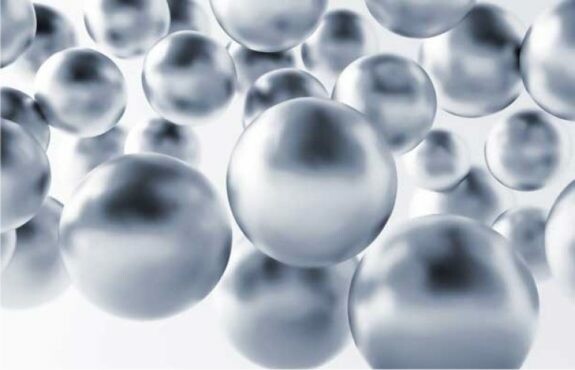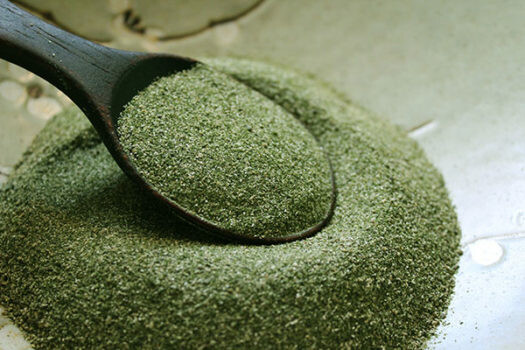
Potassium is an essential mineral used to maintain fluid and electrolyte balance in the body, and it performs many essential functions, such as regulating the heart, balancing the electrical potential of the body, helping to regulate your body’s fluid levels, aiding in muscular function and waste removal, and helping keep your nervous system functioning properly.
Unfortunately, most people aren’t getting anywhere near the required potassium needed for good health on a daily basis. According to the Institute of Medicine, everyone should be getting about 4700 mg per day, but in a modern diet, most people barely reach the 1000 mg mark. Even though potassium is abundant in whole foods, most people just don’t get enough, probably because they don’t eat enough vegetables!
Potassium Pairs
The concept of mineral pairs is extremely important in nutritional balancing science. Potassium commonly pairs with sodium and with calcium, and sometimes with zinc and vitamin A. Potassium is an indispensable cellular electrolyte that works in opposition to sodium to regulate your body’s fluid levels.
The sodium pump forces sodium out of the cells, leaving the potassium on the inside of the cells and sodium on the outside. This causes an “electrical potential” or polarization of the cells that is absolutely necessary for life to exist. On a hair mineral analysis, this electrical charge is represented as the sodium/potassium ratio and it influences other aspects of the mineral chart, as well.
Potassium and calcium form another pair of opposites. Calcium is slow and sturdy, so it is considered a structural element that helps to build the body. Potassium does just the opposite, working as a solvent to break down the structure.
Potassium is also vital to both the thyroid and the adrenals. Nearly every hair tissue mineral analysis (HTMA) I have seen shows low adrenal and thyroid activity, as well as super low potassium levels. The ideal potassium level is 10, and most of the analyses I see have levels of only 1 or 2.
The ratio of calcium to potassium is an indicator of thyroid activity, and the ratio of sodium to potassium is an indicator of overall vitality. Both of these ratios are important for energy levels, sleep and general health. With numbers so low on so many analyses, I think it’s safe to say that there are a lot of people in burnout these days.
Signs And Symptoms Of Potassium Deficiency
A deficiency in potassium can cause a host of symptoms, the biggest one being fatigue which is one that most of my clients struggle with. There are also a number of medical conditions that are caused by or related to insufficient potassium levels.
Conditions Associated with Potassium Deficiency
- Adrenal insufficiency
- Sympathetic dominance (constantly in fight-or-flight mode)
- Hyperparathyroidism (overactivity of the parathyroid glands)
- Hypothyroidism (low thyroid function)
- Hypochlorhydria (low stomach acid)
- Hypoglycemia (low blood sugar)
- Transient hypertension (high blood pressure)
- Carpopedal spasms (involuntary, sudden and violent contraction of muscles of hands, thumb, fingers, feet, and toes)
Common Symptoms
- Fatigue
- Constipation
- Insomnia
- Irritability
- Heart irregularities
- Muscle weakness
- Water retention
- Allergies or histamine reactions
- Poor digestion
- Acne
- Bloating
- Excessive thirst
- Sugar cravings
- Dry skin
- Low cortisol levels
Getting Enough Potassium
If you struggle with any of the symptoms listed above, you could benefit from eating more foods that contain potassium. It is well absorbed from the small intestine (about 90% absorption) and the best way to ensure an adequate intake is to increase your consumption of potassium-rich foods, especially cooked vegetables.
Leafy green vegetables are an easy way to get more potassium, such as Swiss chard, spinach and beet greens. One cup of cooked beet greens has over 1300 mg of potassium and loads of minerals. Sweet potatoes are also packed with vitamins and minerals, including potassium. One medium baked sweet potato has more than 500 mg of potassium plus B vitamins and Vitamin A. Of course there are other foods that are also good sources of potassium, but most people don’t eat enough vegetables! I highly encourage everyone to eat more potassium-rich foods in the form of vegetables.
| Vegetable (Cooked) | Serving | Potassium (mg) |
|---|---|---|
| Beet greens | 1 cup | 1308 |
| Swiss Chard | 1 cup | 960 |
| Sweet Potato | 1 medium | 694 |
| Carrot juice | 1 cup | 689 |
| Cabbage | 1 cup | 393 |
| Spinach | 1 cup | 838 |
There are also potassium supplements available, but frankly, I don’t recommend starting with supplementation. Over-the-counter supplements are generally limited to 99 mg each, and too much straight potassium can be hard on the stomach. You already know there is no shortcut to health – real food is more abundant and beneficial and is the safest supplement you could take.
Making sure that you have enough potassium in your diet is important to your health. One way you can determine this is through a hair mineral analysis. This can give us insight into your potassium levels and allow you to take an active approach in determining how you can best achieve mineral balance. If you are under stress a lot of the time, or don’t eat many foods rich in this mineral, chances are your potassium levels are low which is affecting your overall health. Contact me today for a complimentary call or to schedule a hair mineral analysis.
Sources
Disclaimer: The information contained herein is not to be construed as medical advice and is not intended to diagnose, treat, or cure any medical condition. These statements made have not been approved by the FDA, nor should they be taken as a substitute for medical advice from a licensed physician.
Affiliate Links: Some links on my website and emails are affiliate links. Should you click on these links and decide to purchase anything, I will receive a small commission and you will have my sincere thanks for supporting Tina’s Healthy Living.












